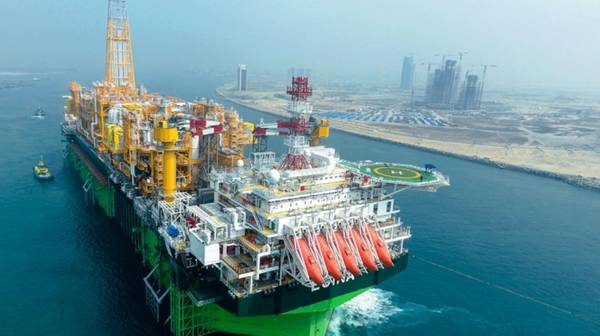
For a range of reasons not all related to costs, offshore operators have stated their preference for floating production with a recent slew of orders, a report by dedicated floating production watchers said this week.
The world’s floating production supply chain — especially those offering front-end engineering and fabrication — can point at the end of November to a two-month surge in orders that accrued to $8 billion worth, the authors of World Energy Reports’ Floating Production Report assert. Five production floaters and a storage unit were ordered, and frontier deepwater — devoid of pipelines and too remote for all but shuttle-tanking — led the way.
WER’s Floater Report chronicles recent contracts, including details of production offshore Brazil. Output at Brazilian floating production systems has reached about 3 million barrels per day, or about three percent of global oil output.
“In the report we profile the daily oil, gas and water production on each of the 53 FPSOs and production semis now operating in the Campos and Santos Basins,” says WER's Paul Morris..
OE Digital got a sneak peak at the report and noted the data section details 216 floater projects in the planning stage, a number that has continued to rise through 2019. There are said to be “47 production or storage floaters now on order, 302 floating production units currently in service and 35 production floaters available for redeployment contracts”.
Planned FPSO locations are also discussed, and there’s much on floaters in operation or under construction. Excel spreadsheets show the info is current to November 23, 2019.
In the five days since the report’s update, other, related activity suggests an overall strengthening of the floater market. The Arctic, and floating liquefied natural gas, or FLNG, have added their weight to general floater-contract momentum.
On Tuesday, Vaar Energi — which wields the rump of Eni Norge assets in the Norwegian near-Arctic, including the Golieat field — said it had entered into frame agreements with Apply and Aker Solutions for maintenance and modifications services “for the company’s operated fields on the Norwegian Continental Shelf”. Vaar is owner of the cylindrical Goliat floating production unit, and M&M contracts are potentially another stream of business for the often “newbuild-only” or “conversion-only” floater supply chain.
Speed to first-oil
The three-year Vaar contracts in-part buck a trend away from “local-content only”. While Vaar Energi cited the company’s “contribution and presence” in Northern Norway as factors in their contract wins, Petrobras, in contrast, did not encumber contractors of the new Marlim 1 and Marlim 2 FPSOs (source: the WER Floater Report) with employment or material demands.
“Local content requirement on both units was near zero,” WER said. “Under the tender rules, bidders (including Modec) could bid to supply both floaters, but were to state prices separately.”
While the majors — and especially international oil companies — are still obliged to seek quality from among contractors with a local base (either of workers, equipment or both), the WER reports of recent months suggest a loosening of restrictive national reins, as operators and energy-short states seek to speed up production above all other considerations.